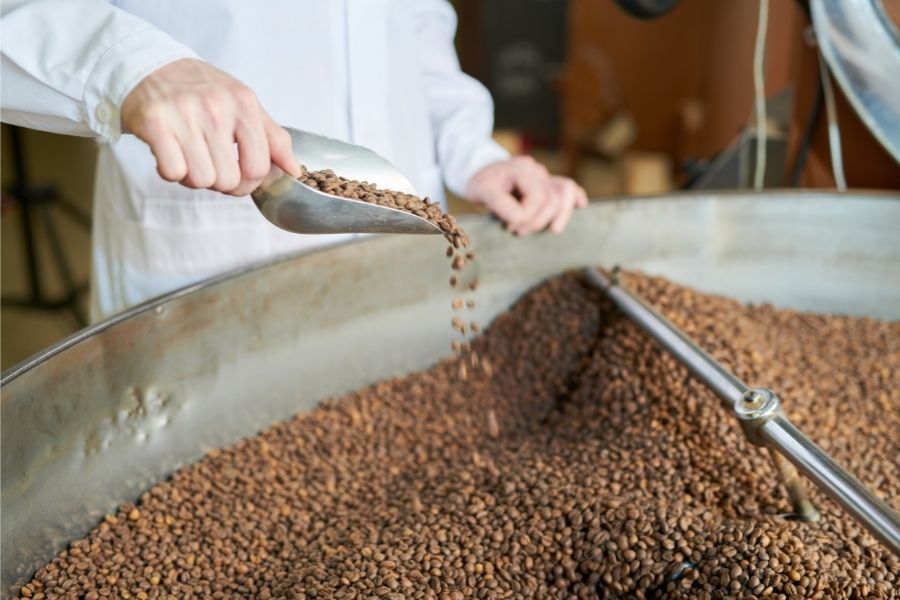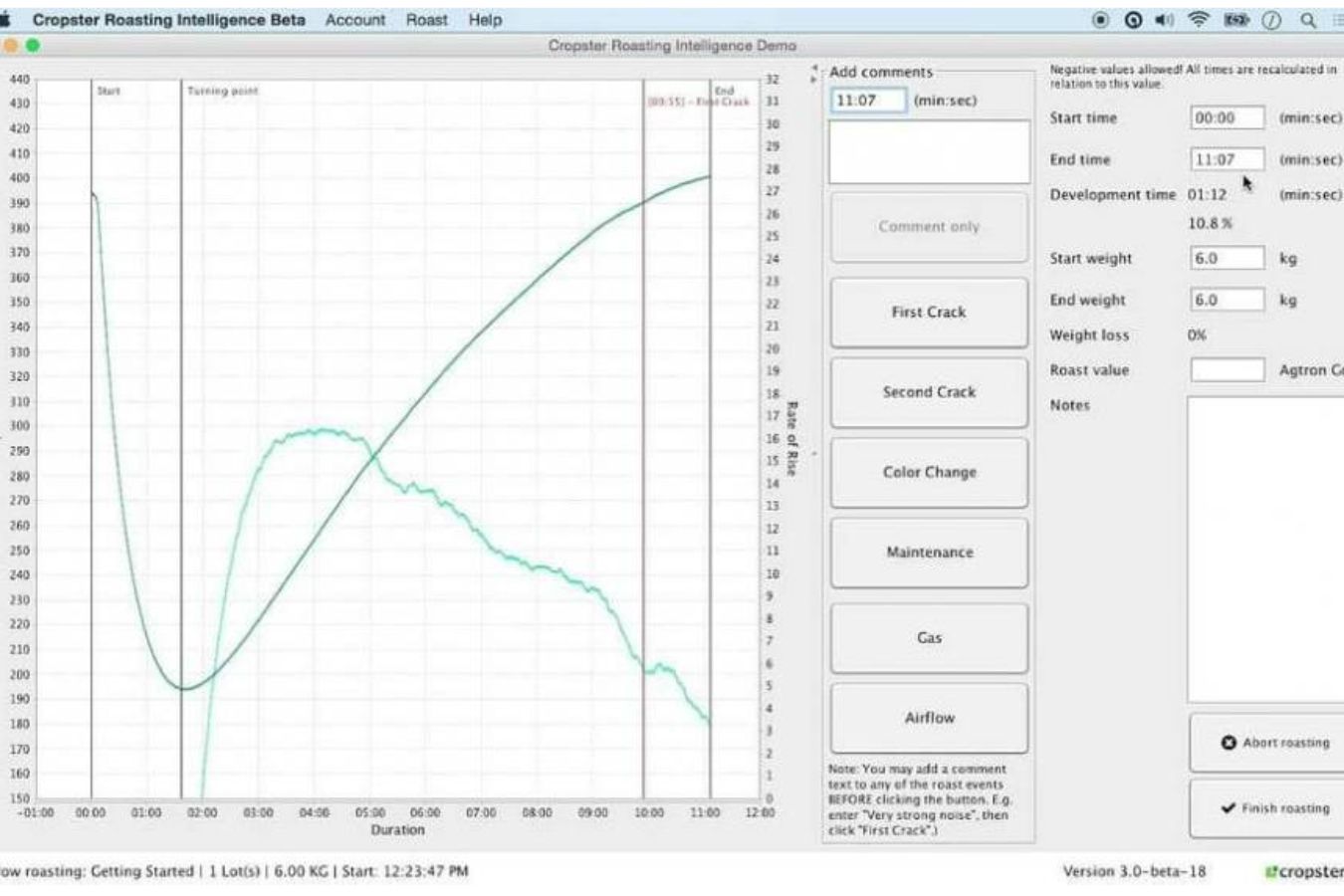
Coffee Roast Profile? – A “diary” that records all changes that occur during the coffee roasting process. Simply expressed, a coffee’s Flavor Profile describes the flavor qualities of the coffee, such as taste, aftertaste, acidity, sweetness, fullness, balance, and so on. coffee of any kind The Roast Profile is a “process record” that keeps track of the time, temperature, and modifications performed during the roasting process to achieve a specific flavor.
First and first, I want to underline that roasting coffee is not simple. Coffee is a complex commodity, and becoming a great roaster will take time, practice, and ongoing experimentation. This will assist you in mentally preparing for the following “tough to stomach” information:
What exactly is the Roast Profile?
The process of heating raw coffee beans for a length of time is known as coffee roasting. This well-known notion serves as a reminder of the two most important things to keep track of during the roasting process: time and temperature.
Each tiny adjustment in either variable will have a significant impact. As a result, you’ll require a comprehensive record of these modifications — the Roast Profile (or Roast Profiling).
A Roast Profile is essentially a “process record” that documents what happened during roasting, what modifications were made, and what taste impacts were observed.
A Roast Profile can be recorded in a variety of methods. You can make a table like the one below by hand, or you can use data logging software like Cropster, Roast Log, Artisan, Roastlogger, Roastmaster, Coffeesnobs, etc.
The usage of computer programs is proving to be more efficient when it comes to creating Roast Profiles. To entirely automate the data recording procedure, all you need is a roasting machine, a sensor reading system, and a computer with an Internet connection.
Furthermore, contemporary systems allow you to make direct temperature and time parameter adjustments during the roasting process, choose the ideal configuration for each type of coffee… and a slew of other free features. that you have sufficient funds to purchase intelligent software.
What is the purpose of the Roast Profile?
You can roast, roast, roast each batch of coffee until it’s perfect; many people do this!
If you confine your roasting to family size, the previous guideline is correct.
Have you ever wondered how Starbucks manages to roast hundreds of tons of coffee per year using ingredients from dozens of countries while maintaining consistent flavor? And the following are some of the benefits that Roast Profile provides:
Assist you in better understanding the physical changes that occur throughout the roasting process, as well as the roasting cycle and the potential to generate coffee flavor. This is similar to a map that shows you where your coffee beans are in terms of flavor transformation.
The equipment parameter records provide a detailed analysis of the roaster’s performance, allowing you to get the most out of it.
Most significantly, the Roast Profile is a “record” that helps you understand what has to be done with a certain coffee or a taste requirement. determined.
Besides.
On the other hand, with the third wave of coffee and the rising demand for high-quality coffee of various kinds, Roast Profile is a general trend that also adds to the sustainability of the coffee business. To fully explore the potential tastes of specialty coffee, it must be “processed” and roasted in a more scientific manner. Add to that public need for coffee chain transparency (do I need to know how my coffee is roasted?) and the Roast Profile becomes even more important.
Roast Profile data can be recorded using a hardware system attached to the roaster.
What are the fundamentals of Roast Profile?
Of course, if you start journaling about Roast Profile in your own style, you won’t be able to generate a comparable effect. You’ll need a system of indicators to track each roast so you can compare and understand how each tweak affects the results. A-frame structure with two primary elements is required for a Roast Profile to be truly functional.
Before the roasting begins, there are a few input variables to consider.
The following are the basic parameters to have before and when roasting a batch of coffee:
- amount of coffee
Moisture content in coffee beans
- Size of the grain
- Weight of each roasting batch
Temperature, humidity, and other aspects of the roasting room’s environment.
- Install and fine-tune the airflow (if any)
- Install and fine-tune the heat source (if any)
- Change the drum’s speed (if any)
Time to cool
Changes that occur during the roasting process
This is the most intriguing and crucial component of a Roast Profile because depending on the adjustments, you’ll get varied outcomes, which you can use to illustrate your “roasting trip.” How are things going so far?
The temperature at which to begin roasting
Rate of Rise (Rate of Rise) – The increase in temperature over time is represented by RoR (Rate of Rise).
- At the commencement of the first crack, every hue changes.
- Time for the first crack to form and finish (First crack), as well as temperature
- a period of time between the first and second cracks
- End of roasting time, total roasting time
- After roasting, mass
- Moisture loss is a problem that many people face (calculated according to the weight of coffee beans before and after roasting)
- After roasting, the color changes.
Roast Graphs – Roast Graphs
There are a lot of characteristics that need to be watched continually before and during roasting, but you don’t have to keep track of them all. In most cases, computer programs will take data from the roaster’s sensors and convert it into a graph in real time.
A variety of graphs are used to represent factors such as machine temperature, grain temperature, pressure, and air convection. Roast Graphs are the collective name for all of these graphs, which are based on You can see how your “roasting adventure” has progressed based on the changes on the graph.
In a nutshell, a newbie can only have so many critical factors. However, when professional perfection is joined with increased personal experience, even more measures and parameters are required before, during, and after each roast.
Looking over these lists and comparing different roasts will help you figure out what measurements and modifications you can do to improve the final quality – that’s how we make the most of it. Fruit with a roasted profile.

How do I use the Roast Profile?
If you roast coffee by hand or if your roasting equipment can’t regulate air, convection current, temperature, or roasting drum speed, for example, the question is whether Roast Profile is actually beneficial.
Yes, you may still change the amount of coffee per roast to the fullest extent possible as long as you focus on the outcomes of each trial.
The above appears to be in conflict with the fact that you have a sophisticated system with numerous sensors and gadgets capable of fine-tuning each roast to perfection.
In this situation, altering too many parameters on each roast at the same time will trap you in a maze with no way out. So, while the rest of the variables remain constant, let’s start altering the parameters one by one to observe which ones have a big impact on the final flavor quality.
Finally, the most important takeaway from Roast Profile is to collect as much data as possible and apply only what is necessary, rather than becoming overly reliant on it.
To attain the greatest results, you can use numbers to systematize measurable factors. However, not every observable sign can be quantified with absolute precision. After all, coffee and everything associated to it is an art, so don’t let dumb numbers take away your artisan side.
Reference source:
- www.williamstownroasters.com/ Understanding Coffee Roasting Curves
- www.perfectdailygrind.com/ Coffee Roasting Essentials: A Guide to Rate of Rise (RoR)
- www.perfectdailygrind.com/ Roaster Basics: An Explanation of Roast Graphs
- www.perfectdailygrind.com/ The S-Curve Roast Profile: Exploring Roasting Basics